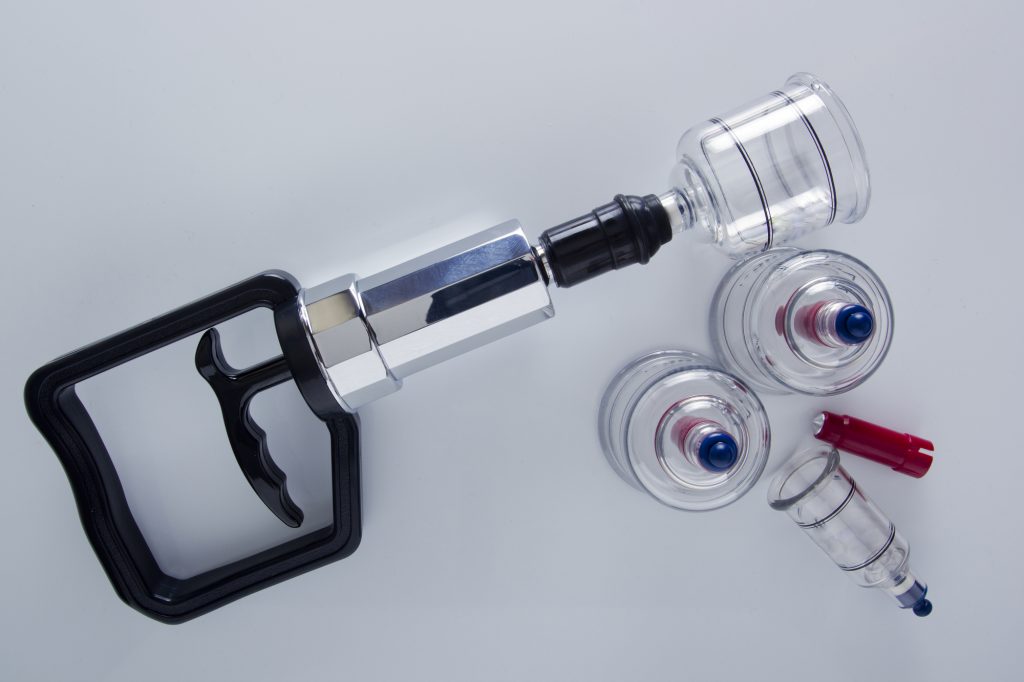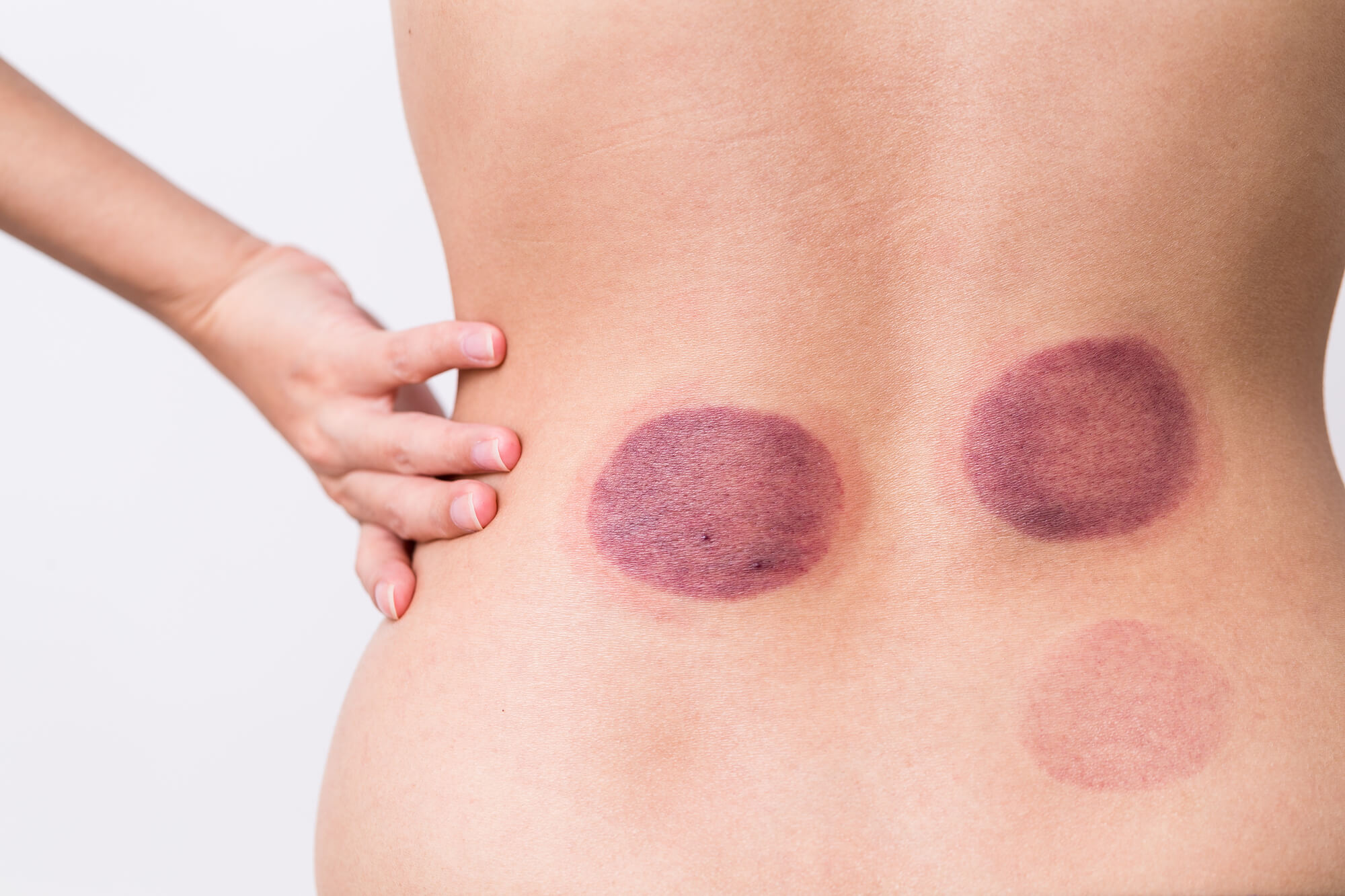These marks are left on the skin after Cupping therapy, one of the treatments I use alongside Acupuncture. Historically, cups were made from bone but nowadays they are made from glass, bamboo and many practitioners, including myself, use plastic cups with a hand pump.
Cupping – How is it done? How does it work?
The Cups are placed on the skin and a vacuum created which lifts the skin and muscle under the cup. This lifting on the surface helps to separate the layers of muscle, fascia and fat. The cups are then moved along muscle fibers (sliding cupping) or left in place over specific areas on the body for 5-10 minutes. This is not painful and many patients find it very relaxing. NB. It is really important when having cupping to ensure the practitioner is fully qualified and experienced as if done incorrectly there is a chance you may blister.
During this process red or purple marks can appear on the skin. These marks are short lived and a good indication change is occurring. Before Cupping I always make Patients aware of the short term marking that usually appears on the skin as some patients will not want the marking; i.e. when wearing certain clothing, going on holiday, etc. In this instance I use a different treatment adjunct such as moxa or the heat lamp.
Cupping intentionally pulls toxin build-up and muscle spasm from deep tissue to the surface of the skin. The cells of the body use oxygen and when the flow of oxygen is impaired, toxins build up and this causes pain. When the toxins are moved to the surface of the skin, the body eliminates the toxins using superficial blood supply. Fresh blood is pulled into the area restoring proper blood flow. This improved blood flow helps to reduce inflammation, promotes cell repair and aids formation of new connective tissue.

Cupping can also be done over specific areas of the body such as the abdomen, face, certain organs and Acu-points to stimulate these areas and help with circulation. It is particularly effective over the lungs to aid the process of clearing phlegm, congestion & fluid build up.
How can Cupping help my health?
1. Cupping Reduces Pain and Restriction
Cupping is a great treatment for tight, sore muscles. By circulating blood flow, especially with deep injury when the blood may not be circulating. Old, un-oxygenated blood is circulated and replaced with fresh oxygenated blood. Cupping also helps relieve pain and discomfort caused by adhesions due to scarring.
2. Cupping Speeds up Healing time
I use Cupping frequently in clinic because it is really effective: I get quicker results alongside acupuncture as it speeds up the body’s natural healing process. This can reduce healing time by weeks or even months. Also, Cupping allows me to work on an area of pain or discomfort directly and can be done without needles. This works well with my needle-phobic patients.
3. Cupping is a Helpful Diagnostic Method
It helps me understand your condition better. I can determine exactly where the problem is as a larger area than the painful area is always cupped. Cupping differentiates between muscle spasm, toxin build up or something else. For example nerve and bone problems will not produce marking. Also, the severity of stagnation can be diagnosed by the severity of the discoloration. From light pink to red, purple and sometimes even black marking.
4. Cupping is Beneficial to Recovery & Healing
Static blood contains toxins, lymph and cell debris. In Chinese Medicine we also talk about pathogenic factors such as Wind, Cold and Damp. Invigorating an area with fresh blood helps draw sticky fluids and pathogens out of the area and it is replaced with new blood containing nutrients that help recovery and healing.
When not to use Cupping. . .
When the skin is broken, raw or damaged I will not cup. I also don’t cup children, pregnant women or the elderly. Some health conditions are contra-indicated including some blood circulatory conditions and patients who take blood thinners.
Further information on Cupping therapy can be found online and in books in my clinic. I recommend reading the work of Susan Johnson and Ilkay Chirali.


2 comments on “What exactly is Cupping therapy and how can it help me?”
Thank you so much for sharing all this wonderful info. It is so appreciated
Hello Jonathan,
I am glad you enjoyed reading the post.
Kind regards
Lucy